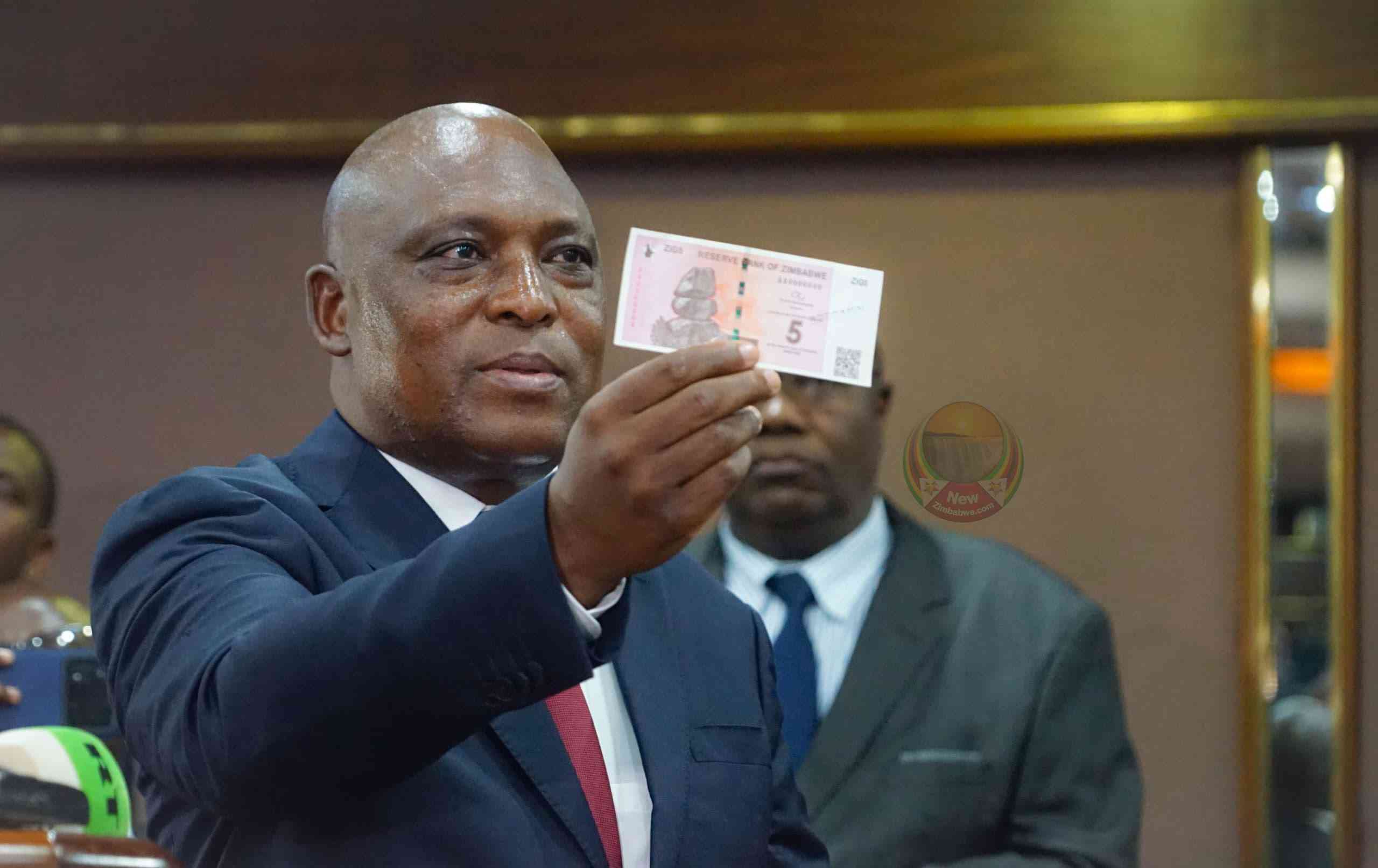
In this week’s interview, Reserve Bank of Zimbabwe governor John Mushayavanhu outlines the central bank’s strategy to fortify monetary stability and restore market confidence amid a fragile macroeconomic environment. He caught up with senior reporter Freeman Makopa (FM), and took the opportunity to discuss inflation trends, the state of official reserves, and the health of Zimbabwe’s banking sector. Below are his views:
FM: Since the introduction of the Zimbabwe Gold (ZiG), what percentage change has been recorded in month-on-month inflation, and how sustainable is this trend given continued external pressures?
JM: The month-on-month inflation rate for ZiG has been relatively stable since the introduction of ZiG, despite a spike in monthly inflation in October 2024, following a sharp depreciation of the exchange rate in September 2024. ZiG month-on-month inflation has been below 1% since February 2025, averaging around 0,5% during the period February to June 2025. Monthly inflation stood at 0,3% in June 2025.
Stability in inflation has benefitted strongly from prudent money supply management which has seen money supply growth being contained to levels consistent with targeted inflation, envisaged positive economic growth and the economy’s capacity to withstand external shocks. As such, the current monetary policy stance has been appropriate to balance growth potential and consolidate price stability.
FM: What is the current level of gross official reserves, and how many months of import cover does this represent? How does this compare to regional benchmarks such as the Sadc minimum threshold?
JM: The country’s total holdings of gold and foreign reserves increased from US$270 million in April 2024 to US$731 million as at the end of June 2025. This is close to a month of import cover, up from 0,4 import cover in April 2024. The international benchmark for import cover is three months of import cover, and the Sadc benchmark is six months of import cover.
These benchmarks, however, pertain to countries in a mono-currency. With countries in multiple currency systems, however, economic agents already have foreign currency reserves in their foreign currency accounts (FCAs) which are treated as free funds. These funds are also available to support imports, in addition to their use as own reserves for precautionary and savings purposes. In this regard, while there is no benchmark import cover for countries in a multicurrency system, it is expected that these countries would normally have lower official reserves at the central bank.
As such, about 95% of import payments in Zimbabwe’s foreign exchange market are funded from individuals and corporates’ FCAs, with the Reserve Bank only supporting a smaller proportion to bridge the intermittent supply-demand shortfalls in the market. As the country moves towards mono-currency by 2030, the central bank is building adequate foreign reserves in order to align with the recommended international benchmarks on import cover.
- Rampaging inflation hits Old Mutual . . . giant slips to $9 billion loss after tax
- Monetary measures spur exchange rate stability: RBZ
- Zim deploys IMF windfall to horticulture
- Banker demands $21m from land developer
Keep Reading
FM: What is the current non-performing loan (NPL) ratio in the banking sector, and what does it indicate about credit risk and capital adequacy within financial institutions?
JM: The NPL ratio across the banking sector has been generally low and within the global benchmark of 5%. The NPLs ratio stood at 3,34% as at March 31, 2025, reflecting a marginal improvement from 3,37% recorded at the end of December 2024.
This relatively low NPL ratio suggests healthier asset quality for banks and further reduces the need for large provisioning against bad loans, thereby preserving profitability and enabling institutions to allocate capital toward growth initiatives. This NPL level combined with capital adequacy ratios above regulatory minimums, supports solid buffers against unexpected losses.
This translates to financial institutions being better positioned to absorb credit shocks enhancing resilience, bolstering investor confidence, and facilitating more lending capacity for productive sectors.
FM: How much foreign currency — quantified in US dollars — has the formal banking system and the interbank market processed in the past six months? What proportion of this has gone to the productive sectors such as manufacturing and agriculture?
JM: Foreign exchange payments processed through the formal interbank market consist of transactions processed through FCAs (constituting about 95% of the total); Willing-Buyer Willing-Seller transactions; and Reserve Bank interventions.
During the first half of 2025 a total of US$4,561 million worth of import payments was transacted through the individual and corporate FCAs (free funds), market trading of foreign exchange accounted for just over US$480 million while Reserve Bank interventions amounted to close to US$450 million.
A significant proportion of the foreign currency transacted through the country’s foreign exchange market has benefited key productive sectors including manufacturing, mining and agriculture, while also benefiting education and service industries.
FM: What is the latest figure for broad money supply (M3), and how has the bank managed its growth to ensure monetary stability while avoiding speculative market distortions?
JM: The Reserve Bank ensures prudent money supply management to reduce pressure on inflation and the exchange rate. As such, the bank has been controlling the growth of both reserve money and broad money, to ensure that money supply in the economy remains just sufficient to support productive economic activity. In this regard, M3 stood at ZiG93,17 billion in May 2025. The Reserve Bank has continued to pursue a prudent monetary policy stance, and this has resulted in the decline in month-on-month broad money growth and has brought stability to inflation and the exchange rate.
FM: Can you provide a year-on-year breakdown of diaspora remittance inflows, and what policy instruments is the RBZ using to promote formal channelling and productive use of these funds?
JM: To promote formal channelling of remittances, the RBZ has established a dedicated Diaspora Desk within its Capital Flows Administration, Accounting, and Management Division. The Diaspora Desk actively provides information on investment opportunities available in Zimbabwe across different sectors.
The desk also engages with the diaspora community to understand their needs, concerns, and investment preferences, fostering a more enabling environment for their participation in the economy, including acknowledging their contribution and protecting their interests.
The Reserve Bank has also designated diaspora remittances as free funds, thus allowing recipients to receive their funds in foreign currency and utilise them as they desire. The RBZ’s Financial Surveillance Division regulates money transfer agents and ensures that these institutions adhere to robust Anti-Money Laundering and Countering the Financing of Terrorism (AML/CFT) regulations. This safeguards the integrity of financial transactions and helps prevent illicit financial flows, building trust in the formal system.
FM: How is the RBZ balancing the cost of borrowing against the objective of stimulating private sector-led economic growth?
JM: The current bank policy interest rate is 35% and is periodically reviewed in line with underlying economic fundamentals including to curb speculative borrowing and consolidating price stability. In this regard, it is set at a level that ensures positive real interest rates in the economy. Given an expected annual inflation of around 30% by December 2025, at 35% the policy rate provides for a 5% real interest rate.
To ensure that the current monetary policy stance does not compromise growth, the Reserve Bank put in place a Targeted Finance Facility (TFF) to ensure a continued flow of credit to productive sectors. Through this window, the Reserve Bank provides on-lending funds to banks at an interest rate of 20%, with a maximum on-lending rate of 30% to end-users. This facility has enhanced access to affordable, low-cost financing for critical sectors such as agriculture, manufacturing, and mining, which are the key pillars of sustainable economic growth. A total of ZiG350 million is outstanding under the TFF.
FM: How has the RBZ’s inflation-targeting framework performed in comparison to regional central banks with regard to inflation control, exchange rate stability, and monetary-fiscal coordination?
JM: Currently, the Reserve Bank is not using an inflation targeting framework. The current monetary policy framework involves controlling the reserve money as an operational target to stabilise the exchange rate, which becomes the nominal anchor.
The use of reserve money to stabilise the exchange rate was preferred, given that the country is dollarised. In a dollarised environment, the prudent monetary policy mix should include both local and foreign currency components in the targeting framework. In this regard, the Reserve Bank continues to monitor the developments in both money supply and the exchange rate, so as to achieve low inflation targets.
So far, this framework has yielded positive results as monthly ZiG inflation has been contained to an average 0,5% over the past five months. In addition, the exchange rate has been stable since October 2024, and the exchange rate premium has also remained within tolerable levels.
Considerations to move to inflation targeting will be guided by the NDS2 framework, taking into account the developments in inflation and other key fundamentals.
FM: What is the total value of RBZ-issued gold-backed digital tokens and ZiG notes currently in circulation? What measures are in place to ensure full backing by gold reserves or other tangible assets to sustain long-term confidence in the currency?
JM: The Reserve Bank has issued 942 789 486 gold-backed digital tokens (GBDTs), which is about 942,8 kgs of gold. The outstanding GBDTs are now 196 580 830 (about 196,6 kgs and equivalent of about US$21,2 million) as of July 15, 2025, following redemptions of 746 208 656 GBDTs (746,2 kgs).
ZiG notes in circulation (issued) are ZiG338 429 074 (about US$12,5 million equivalent). As we have indicated in previous communications, we have just over US$700 million in gold and foreign currency reserves, which represent a cover of over 20 times on the currency and outstanding GBDTs. Notwithstanding, the Reserve Bank has in place a reserves accumulation strategy to build foreign currency and gold reserves to a minimum of three to six months import cover by 2029.






